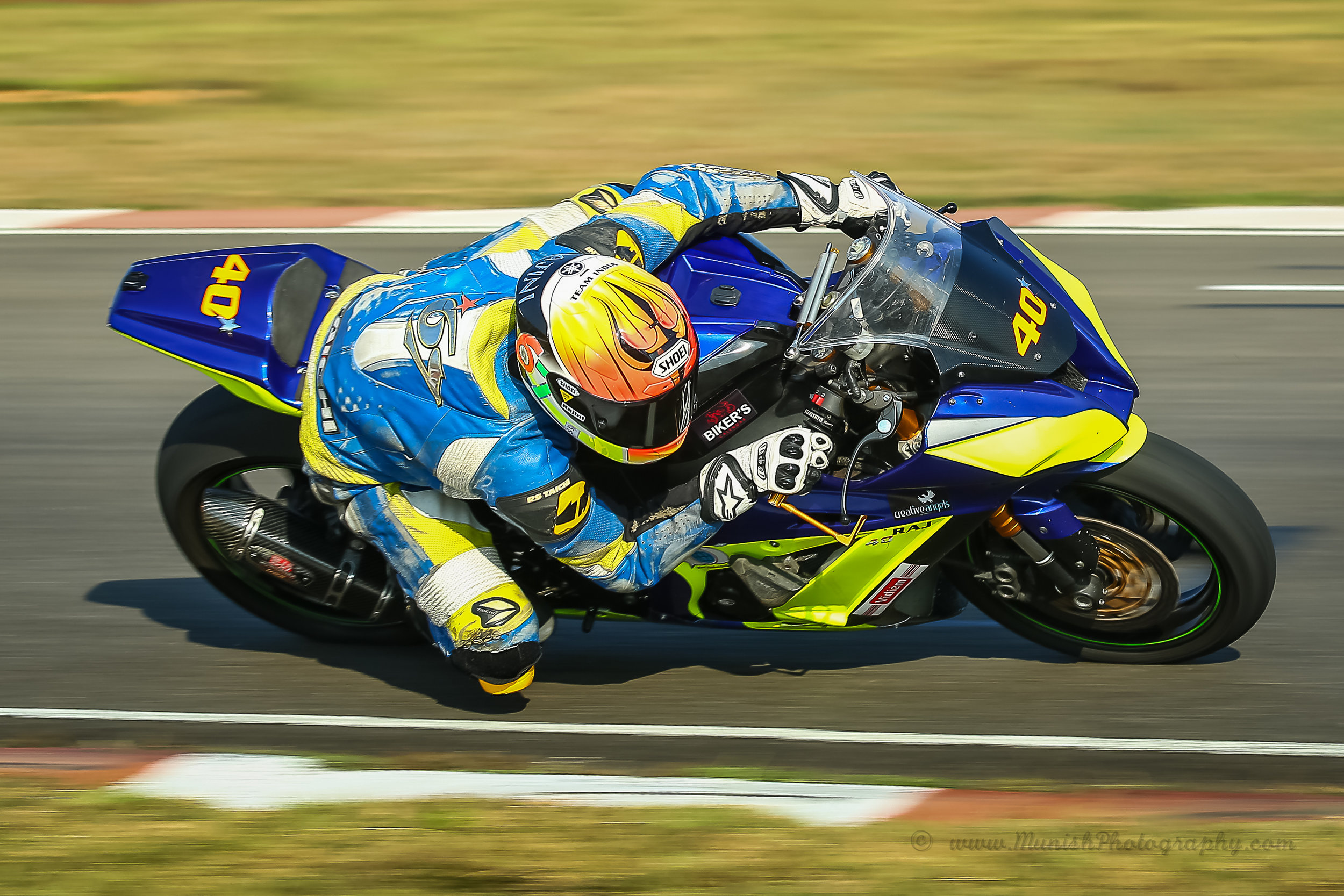Wedding photography may have monopolized photographic interests in India. But just like the state of sports in this country, all it takes is a little awareness for people to look beyond and identify other forms of photography that might pique their interest.
One such interesting option is motorsports photography.
From Asian Road racing championship @ Chennai
hile fashion and commercial photography have thrived over the years, lesser-known genres like motorsports photography are slowly expanding beyond the purview of journalism.
A big challenge for motorsports photography enthusiasts is the fact that it doesn’t enjoy the same popularity as other sports, mainly cricket. There are very few international-standard race tracks in India. And it’s mostly bike makers, tyre and accessory manufacturers who sponsor these events.
So, it does take patience and a diligent pursuit of opportunities to be successful as a motorsports photographer. Not that technique is easy—on the contrary, it takes a lot of practice and a creative eye to make pictures that stand out.
Indian Racer Rajini Krishnan at Chennai track.
So, how does one start with motorsports photography?
Choosing the right equipment (telephoto lenses, cameras with high fps, etc.) is just part of the big picture. To shoot at a racetrack, you’ll need prior permission from the officials. Usually, only approved media representatives and official photographers of the race club (like the Madras Motor Sports Club, MMSC, in Chennai) are allowed to take photographs.
Once you’ve managed to gain access and necessary permissions to shoot, what you need to focus on is technique. Two of the most common techniques employed are: panning and freezing. Of course, all other composition, light, and framing rules also apply.
Panning
Panning is one of my favourite composition techniques, mostly so because it requires immense skill and practice.
A Panning Shot, from Malaysia SuperBike Championship. 2017
Panning emphasizes the speed of the racer, by making sure the moving subject or the racer is tack sharp while the other elements in the frame are blurry (usually blurry lines).
At comparatively lower shutter speeds, the synchronized alignment of the lens and the moving subject is key to a successful panning shot. The composition usually involves a single racer, so you know what your frame is exactly and work towards building a story out of that.
When Narain karthikeyan took on the track in Chennai.
- Shutter speed settings of 1/60s to 1/200s are common, and it depends on the speed of the racer at that point in time.
- Recommended aperture is one stop lesser than the native wide-open setting of the lens. I usually choose F6.3 with a 400mm focal length.
- ISO depends on the existing lighting conditions—as always, the lower the better. But since shutter speeds are typically low, ISO 100 is quite easily achieved.
- Manual selection of a single focus point is always recommended. In case multiple points are selected, focusing on the helmet and the headlight lamp can make a huge difference while viewing the picture big.
- AI Servo is a thumb rule. Because the subject moves at 150+ km/h, the difference in time between focusing and exposure matters a lot. At the same time, freezing the focus point with AI Servo is critical; I usually select an area with high contrast to keep my lens focusing system predictable.
Freezing
Freezing is more in tune with framing and focusing. The placement of the subject in the frame when it is zipping through at 150+ km/h is the challenge here.
Ideally, you can efficiently freeze the subject at decisive moments like negotiating a curve, touch and go situations, and so on.
Unlike panning, in this technique, the background plays a major role. It might be a challenge, but I usually find that branding boards make for a good background.
Typical challenges you’ll face at the racetrack
Racetracks are dusty and hot, and you might spend a full day under the sun. It takes passion and high endurance levels to keep yourself going.
Besides, you’ll also need to be proactive—running from one corner of the track to another is the only way you can get good angles and capture defining moments.
Some tips
Usually, I attempt freezing motion shots in the first few laps in at least two corners, so that I capture a small group of racers negotiating the corner.
Mid-race is when I focus on panning shots and choose a few leading racers to make good pictures.
The time of race matters much, because harsh light can lead to dark shadows and unusable images. This means you might have to compromise on better angles for good light.
Jorge Lorenzo @ Sentul Racing Track, Indonesia
Motorsport photography is not about planning and executing. It is about capturing the moment with skill and knowledge that you have acquired through practice and experience. But know that the rewards are fulfilling, if you can overcome the challenges.







